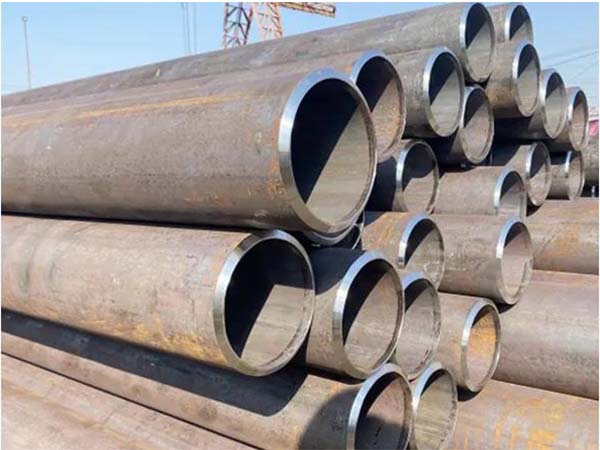
|
NPS |
OD (mm) |
Wall thickness(mm) |
Weight (kg/m) |
|
1" |
33.40 |
3.38 |
2.68 |
|
2" |
60.33 |
3.91 |
5.44 |
|
4" |
114.30 |
6.02 |
18.97 |
|
6" |
168.28 |
7.11 |
36.31 |
|
8" |
219.08 |
8.18 |
52.99 |
|
12" |
323.85 |
9.53 |
93.91 |
To obtain the complete PDF of the Schedule 40 Dimensions Table, please click ASTM A106 Schedule 40 Dimensions Table (Imperial & Metric)
Application fields of ASTM A106 Schedule 40
High-temperature and high-pressure conveying
ASTM A106 seamless steel pipes of Schedule 40 specification can withstand relatively high internal pressure and working temperature, and are often used in power plant steam pipelines and high-pressure heating systems.
The oil and gas industry
In refineries, oilfield pipelines and natural gas processing facilities, Schedule 40 pipelines are widely used for transporting high-temperature fluids containing corrosive media.
Industrial boilers and chemical equipment
Schedule 40 has excellent oxidation resistance and pressure-bearing capacity, making it suitable for boiler feed water systems, chemical reaction pipelines and other applications.
Comparative analysis with other specifications
Schedule 40 vs Schedule 80
Wall thickness: Schedule 80 is significantly thicker than Schedule 40, with a higher pressure-bearing capacity, but the weight and cost also increase.
Application: Schedule 40 is suitable for medium-voltage systems, while Schedule 80 is often used in high-pressure or harsh environments.
ASTM A106 vs ASTM A53
A106: Seamless carbon steel pipe, suitable for high temperature and high pressure.
A53: It can be seamless or welded steel pipe, suitable for low-pressure transportation and structural applications.
ASTM A106 vs API 5L
A106: More commonly used in industrial fluid transportation and boiler systems.
API 5L: Mainly used in long-distance oil and gas transmission pipelines.
Processing and installation precautions
Welding
ASTM A106 Schedule 40 pipes are suitable for butt welding, socket welding and other methods. It is recommended to preheat before welding. After welding, stress relief heat treatment can be carried out according to the working conditions.
Cutting and thread processing
Ensure that the dimensional error after processing does not exceed the standard tolerance to avoid affecting the installation fit.
Anti-corrosion and surface treatment
It can be painted, hot-dip galvanized or coated with epoxy to extend the service life, especially in Marine or chemical environments.
Conclusion
ASTM A106 schedule 40 seamless pipe takes into account the advantages of moderate wall thickness, strong pressure-bearing capacity and wide application range, and is a common choice for high-temperature and high-pressure conveying systems. Whether it is engineering design, procurement or export trade, mastering accurate dimension tables and standard requirements is the key to ensuring the smooth implementation of the project.
Read more:Schedule 40 steel pipe or ASTM A106 pipe